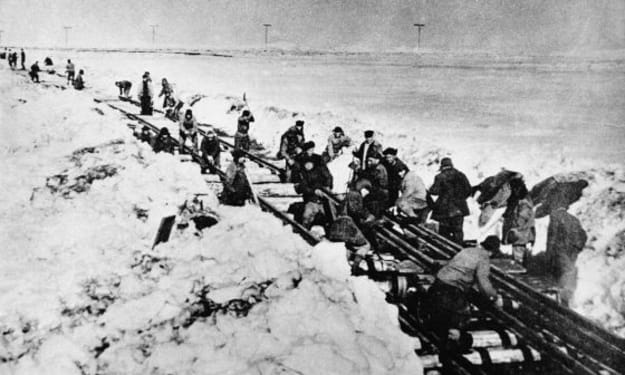The Wall Street Bombing
By the next day the damaged was cleared away and the workers returned.

New York has been the victim of many terrorist attacks. In 1920, it was targeted by an unknown person or persons when they bombed Wall Street.
The evidence of the attack can still be seen on the walls of the building, showing several holes made by the shrapnel. However, the event is hardly spoken about. At the time, the evidence was cleared away with alarming speed. Wall Street opened the very next day.
This incident was not an isolated occurrence during the early 20th century. Many bombers were operating in the United States. It was a time of great social upheaval, with a quarter of the workforce on strike over conditions and pay.
However, the Wall Street bombing was unique in the fact that it caused death to innocent people. Until then, bombings had been against specific targets, not members of the public.
Horse and Cart
On 16 September 1920, the financial district was as busy as always. People rushed about their work without a care in the world.
The lunch rush was just beginning when a non-descript man approached, urging his horse forward. He progressed through the area with his cart.
He stopped the cart and unloaded his cargo in front of the U.S. Assay Office, which stood opposite J.P. Morgan's building in the centre of Wall Street.
The driver then left, blending into the crowd. No one really observed him, and afterwards, none could describe him clearly.
Explosion
Within minutes of the man leaving, the cart exploded. It fired a hail of metal fragments across the road. Immediately, it claimed the lives of thirty people and injured three hundred.
The death toll was raised as eight more victims succumbed to their injuries. Smoke filled the streets, and everywhere was covered with shattered glass and debris.
Junius Morgan, the son of J.P Morgan, was one of the wounded. Some would speculate he may have been the original target, but this was soon ruled out.
The bombs all but vapourised millionaire restaurant owner John Steele Gordon. All that was found was a finger containing his ring.
A Quick Clear-Up
It was obvious to all that the explosion had been the work of terrorism; the attack was deliberate. Crews arrived and started clearing up the damage overnight. With it, they took away any physical evidence.
This was evidence that scientific improvements may well have provided the identity of the terrorists today.
By the following day, Wall Street was back in business. The broken windows were draped with canvas. Workers arrived in bandages and on crutches. Wall Street started to function again.
Investigation
The New York Police and Fire Department, the Bureau of Investigation and the Secret Service conducted the investigation.
They quickly identified that the bomb was packed with TNT and iron window sash weights, which caused the damage. The bomb was detonated on a timer.
The Bureau started by interviewing hundreds of people who had been around the area. Very few people could even recall the driver and wagon; for those who did, the descriptions were vague and useless.
The NYPD reconstructed the bomb and firing mechanism. It provided limited evidence as many of the components were readily available from local shops.
Responsibility
The departments were mainly at a loss as to who had committed the bombing. The most promising lead had been received before the explosion. Flyers had been found in the area, and from a group calling themselves 'American Anarchist Fighters', they demanded the release of political prisoners.
The flyers also bore a resemblance to ones that had been used in a bombing campaign two years before the bombing from a group known as 'Italian Anarchists.' There was no success despite investigating the East Coast to find who had printed the leaflets.
The Bureau also believed the bombing had an Italian connection. They suspected the followers of Luigi Galleani. Although the anarchist had fled the country after the bombing, they were unable to link him to the attack.
Case Closed
Over the next three years, hot leads turned cold and any promising trails they had led to dead ends. The bombers were never to be identified.
Scientists have revisited the limited evidence available from the bombing and believe that the Bureau may be correct that a small group of Italian Anarchists were to blame. However, with the lack of solid evidence, the mystery remains.
Other possible motives were that the bomb was to create a diversion so the Sub-Treasury Building could be robbed.
Some stated that tennis player Edwin P Fischer, who frequently went into mental hospitals, was involved. It stated that he had predicted the explosion. However, he was in Canada at the time of the incident.
None of these theories came to anything, and the investigation was dropped in 1940.
The Wall Street bombing was one of the first bombings that the Bureau investigated; it is also one of the earliest terrorism cases; sadly, it was not the last time New York was attacked.
It's easy to imagine that terrorist violence only began in the late 20th century. But this is a reminder that it's always been in the system and, most likely, always will be. - Bellows, director of the American Experience documentary
About the Creator
Sam H Arnold
Writing stories to help, inspire and shock. For all my current writing projects click here - https://linktr.ee/samharnold






Comments (1)
Wow! Thanks for this history lesson I was never aware of. So interesting. Great job.